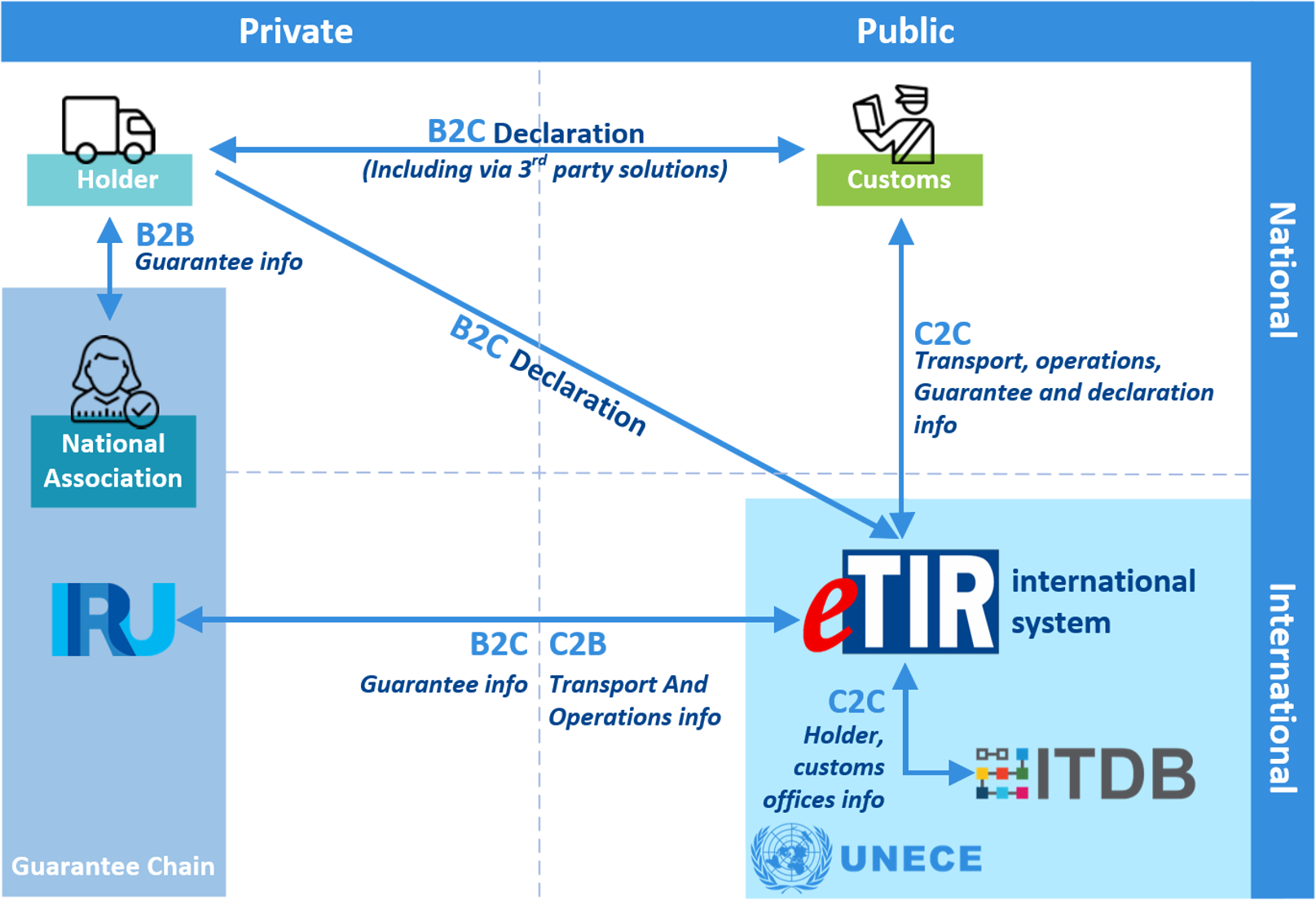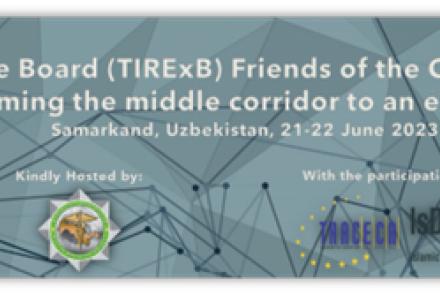How does eTIR work?

The eTIR procedure is based on the exchange of messages between its different actors. These “eTIR messages” are automatically exchanged via information systems on given events and allow all actors to be transmitted the appropriate information at the right time to ensure smooth TIR transports. Paper TIR Carnets are not used anymore with the eTIR procedure, only eGuarantees to insure the TIR transport. The diagram below details the different types of information that can be exchanged between the various actors of the eTIR procedure, in particular with its principal cornerstone: the eTIR international system
The figure above shows the interactions between the main actors of the TIR Convention in the context of the eTIR procedure. The guarantee chain starts by issuing an electronic guarantee to a holder and registers it with the eTIR international system. The holder sends the declaration data to customs or directly to the eTIR international system which will then forward it to customs. Upon presentation of the vehicle at the customs office of departure, its loading is checked against the declaration data previously sent, and customs send the approved declaration data to the eTIR international system and notify the start of a TIR operation. When the TIR transport reaches the customs office of exit, customs notify the termination and, possibly at a later stage, the discharge of the TIR operation to the eTIR international system. The same occurs for all subsequent TIR operations in the countries en route and of destination. The guarantee chain and the customs authorities participating in the TIR transport are notified by the eTIR international system on specific events so they can follow the transport and query information on the guarantee to populate their information systems. Finally, necessary checks are continuously performed by the eTIR international system against the International TIR DataBank (ITDB) with regard to holder and customs office data.




